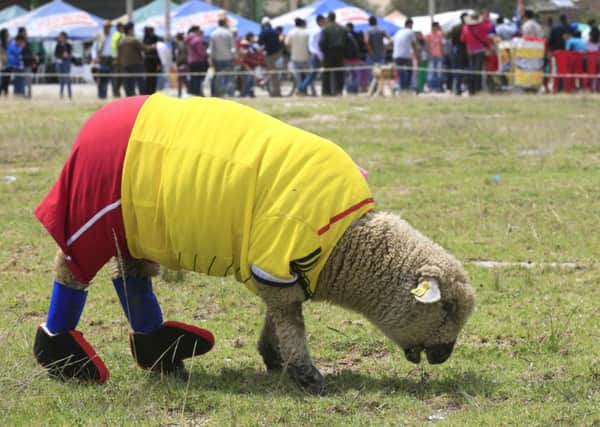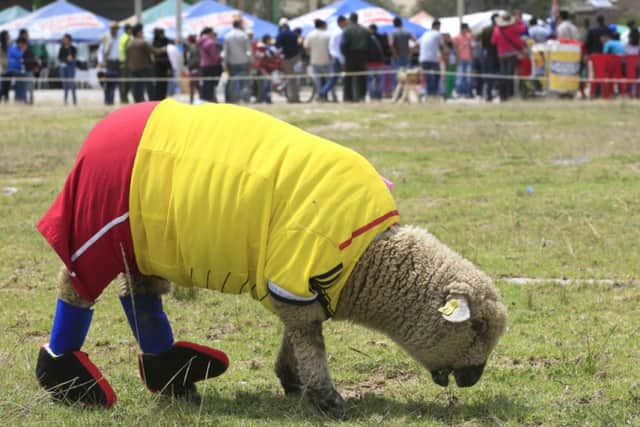Sheep soccer match marks Colombia World Cup return


To celebrate the country’s return to the World Cup after a 16-year absence, artisans in the high Andean town of Nobsa put on what they billed as the first football match played by sheep on Sunday.
On one side, dressed in specially made yellow jerseys and red shorts for Colombia’s national colours, were 10 four-legged players each named in honour of one of the country’s top footballing talents. Their rivals represented powerhouse Brazil, which hosts the month-long tournament beginning June 12.
Advertisement
Hide AdAdvertisement
Hide AdSome 500 beer-soused spectators cheered on the farmyard footballers, which were trained for two weeks to recognise and kick a foam soccer ball through a rustic goalpost made of wooden logs.


The hard work was little in evidence, though. Sheep are highly social animals, seeking safety from predators in large herds, and their shepherd handlers had to keep pulling on ropes tied to the animals’ necks to keep the bleating players scattered and moving so they wouldn’t end up munching lazily on what grass remained on the improvised pitch.
The final result was a 4-3 victory for Colombia, thanks to a goal in the final 50th minute by the mutton midfielder “James Rodriguez,” whose two-footed namesake plays for French club Monaco.
The publicity stunt was part of International Ruana Day, which every year honours local artisans who for centuries have been hand-spinning the poncho-like woollen wraps that are ideally suited to the region’s wet, mountainous climate more than 8,000 feet above sea level.
“The ruana is a global symbol, so it’s only natural that the sheep deserve to be honoured,” said Ramiro Barragan, Nobsa’s mayor.
Ruanas are traditionally worn in their natural black or brown colours.
But Barragana and many others in Nobsa were sporting shawls dyed pink Sunday. That’s the colour of the leader jersey in the gruelling, three-week Giro d’Italia bicycle race, which was won Sunday by Colombia’s newest sports hero, Nairo Quintana.
Quintana, the son of peasant farmers, was raised in the nearby highland town of Combita.